Accepted Scientific Name: Coryphantha compacta (Engelm.) Britton & Rose
Cactaceae (Britton & Rose) 4: 36, fig. 33. 1923 (et: Orcutt Circular to Cactus Fanciers p.i. 1922). Britton & Rose
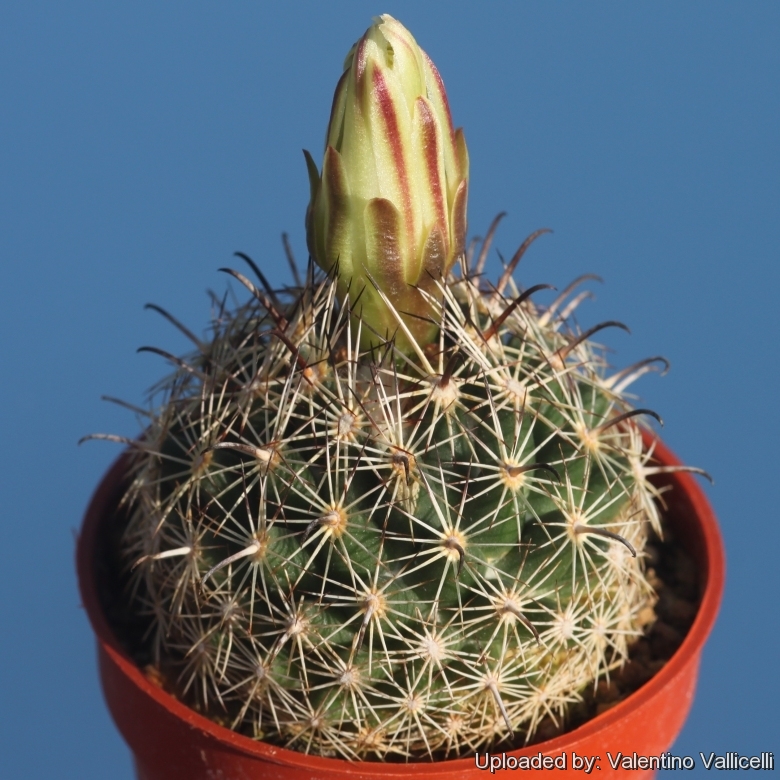
Coryphantha palmeri Photo by: Valentino Vallicelli
GL66 (Collector: Gary Loos) Locality: Norht-East of Aramberri, Nuevo Leon, Mexico
Origin and Habitat: Durango, Mexico.
Habitat: Grows on stony ridges on lime rich soils.
Synonyms:
See all synonyms of Coryphantha compacta
back
Accepted name in llifle Database:Coryphantha compacta (Engelm.) Britton & RoseCactaceae (Britton & Rose) 4: 36, fig. 33. 1923 (et: Orcutt Circular to Cactus Fanciers p.i. 1922).Synonymy: 7
back
Common Names include:
ENGLISH: Pincushion Cactus
SPANISH (Español): Huevos de Coyote, Biznaga de Pina, Doñana
TARAHUMARA: Bakánawa, Híkuri, Wichurí, Bakána, Bakánori, Híkuli, Santa Poli
Description: Coryphantha palmeriSN|1061]]SN|1064]] is a small solitary globose cactus with usually one stout hooked central spines, it is one of the many geographical forms of the extremely variable Coryphantha compactaSN|1061]]SN|1061]]. With the exception of the absence or existence of centrals, all the other characteristics are absolutely identical with Coryphantha compactaSN|1064]]SN|1061]], namely size and form of tubercles, number, size and arrangement of radial spines, flowers, fruits and seeds. Furthermore this species is one of those Coryphanthas which pass a purely radial-spined long youth stage in which they are already floriferous. Most of the plants after several years develop the central spines, giving the plant its sea urchin appearance.
Stem: Globular small, somewhat depressed, pale grey-green to deep green, 4-5 cm high, 6-8 cm broad, but occasionally up to 10 cm tall and clustered especially in cultivation.
Tubercles: Closely set in about 13 rows but not very regularly arranged, pale green, not very flaccid.
Radial spines: 11 to 14, rather stout, horizontally radiating nearly at right angles to central one, yellowish with tips often blackish.
Central spines: One single, strong and hooked (but often wanting ).
Flowers: Small, pale yellow to nearly white flowers of only 3 cm diameter.
Bibliography: Major references and further lectures
1) Edward Anderson “The Cactus family” Timber Press, Incorporated, 2001
2) James Cullen, Sabina G. Knees, H. Suzanne Cubey "The European Garden Flora Flowering Plants: A Manual for the Identification of Plants Cultivated in Europe, Both Out-of-Doors and Under Glass" Cambridge University Press, 11/Aug/2011
3) David R Hunt; Nigel P Taylor; Graham Charles; International Cactaceae Systematics Group. "The New Cactus Lexicon" dh books, 2006Jackie M. Poole, William R. Carr, Dana M. Price, Jason R. Singhurst “Rare plants of Texas: a field guide” Texas A&M University Press, 30/Dec/2007
4) Nathaniel Lord Britton, Joseph Nelson Rose “Cactaceae: Descriptions and Illustrations of Plants of the Cactus Family” Courier Dover Publications, 1963
 GL66 Norht-East of Aramberri, Nuevo Leon, Mexico Photo by: Valentino Vallicelli
GL66 Norht-East of Aramberri, Nuevo Leon, Mexico Photo by: Valentino Vallicelli Coryphantha palmeri Photo by: Valentino Vallicelli
Coryphantha palmeri Photo by: Valentino Vallicelli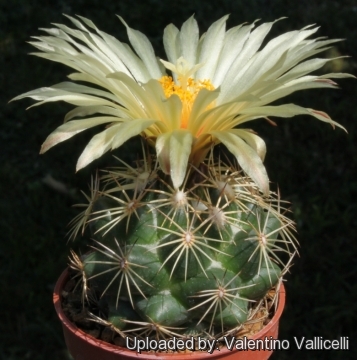 Coryphantha palmeri Photo by: Valentino Vallicelli
Coryphantha palmeri Photo by: Valentino Vallicelli Coryphantha palmeri Cardenas, , San Luis Potosi, Mexico Photo by: Valentino Vallicelli
Coryphantha palmeri Cardenas, , San Luis Potosi, Mexico Photo by: Valentino Vallicelli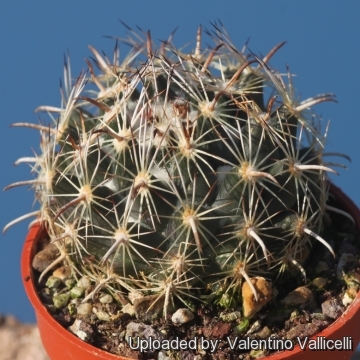 A dwarf form. Photo by: Valentino Vallicelli
A dwarf form. Photo by: Valentino Vallicelli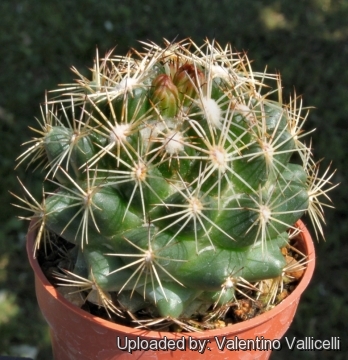 Coryphantha palmeri Photo by: Valentino Vallicelli
Coryphantha palmeri Photo by: Valentino Vallicelli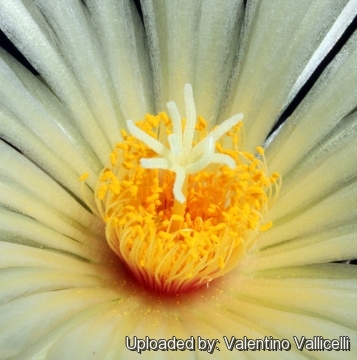 Coryphantha palmeri Photo by: Valentino Vallicelli
Coryphantha palmeri Photo by: Valentino Vallicelli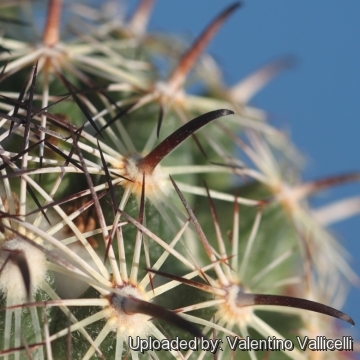 GL66 Norht-East of Aramberri, Nuevo Leon, Mexico Photo by: Valentino Vallicelli
GL66 Norht-East of Aramberri, Nuevo Leon, Mexico Photo by: Valentino VallicelliCultivation and Propagation: In culture it is without problems, and regularly shows its large yellow flowers. It does best in slight shade, but does well in full sun too. It is sensitive to overwatering (rot prone), and needs a very porous soil with good drainage. It flowers quite early, but needs about 8-12 years to reach the typical, definite outlook. It tolerates fairly low temperatures as long as it is kept dry (hardy to -12° C for short periods of time).
Propagation: Propagation is by seed.
Traditional uses: Used by Tarahuma shamans as a kind of peyote. It is reported to have hallucinogenic properties.
Your Photos
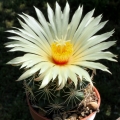
by Valentino Vallicelli
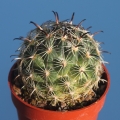
by Valentino Vallicelli





















